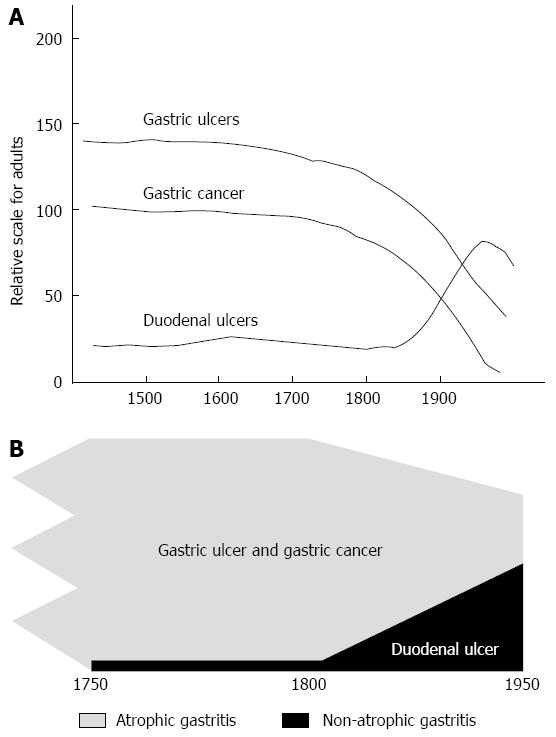Copyright
©2014 Baishideng Publishing Group Co.
World J Gastroenterol. May 14, 2014; 20(18): 5191-5204
Published online May 14, 2014. doi: 10.3748/wjg.v20.i18.5191
Published online May 14, 2014. doi: 10.3748/wjg.v20.i18.5191
Figure 8 In this 65 years old cohort the change in gastric incidence occurred without a change in the prevalence of Helicobacter pylori.
A: Model showing that gastric ulcer and gastric cancer were present and relatively common until the early 20th century when changes in the pattern of gastritis and also the prevalence of Helicobacter pylori (H. pylori) infection separately led to a reduction in incidence. In contrast, the change in the pattern of gastritis and new diagnostic modalities led to ascendance of duodenal ulcer until the rise was overtaken by the fall in H. pylori prevalence (the scale is arbitrary); B: The same results shown in relation to the underlying pathology, atrophic pangastritis which manifests clinically as gastric ulcer or cancer and non-atrophic gastritis which manifests as duodenal ulcer.
-
Citation: Graham DY. History of
Helicobacter pylori , duodenal ulcer, gastric ulcer and gastric cancer. World J Gastroenterol 2014; 20(18): 5191-5204 - URL: https://www.wjgnet.com/1007-9327/full/v20/i18/5191.htm
- DOI: https://dx.doi.org/10.3748/wjg.v20.i18.5191









